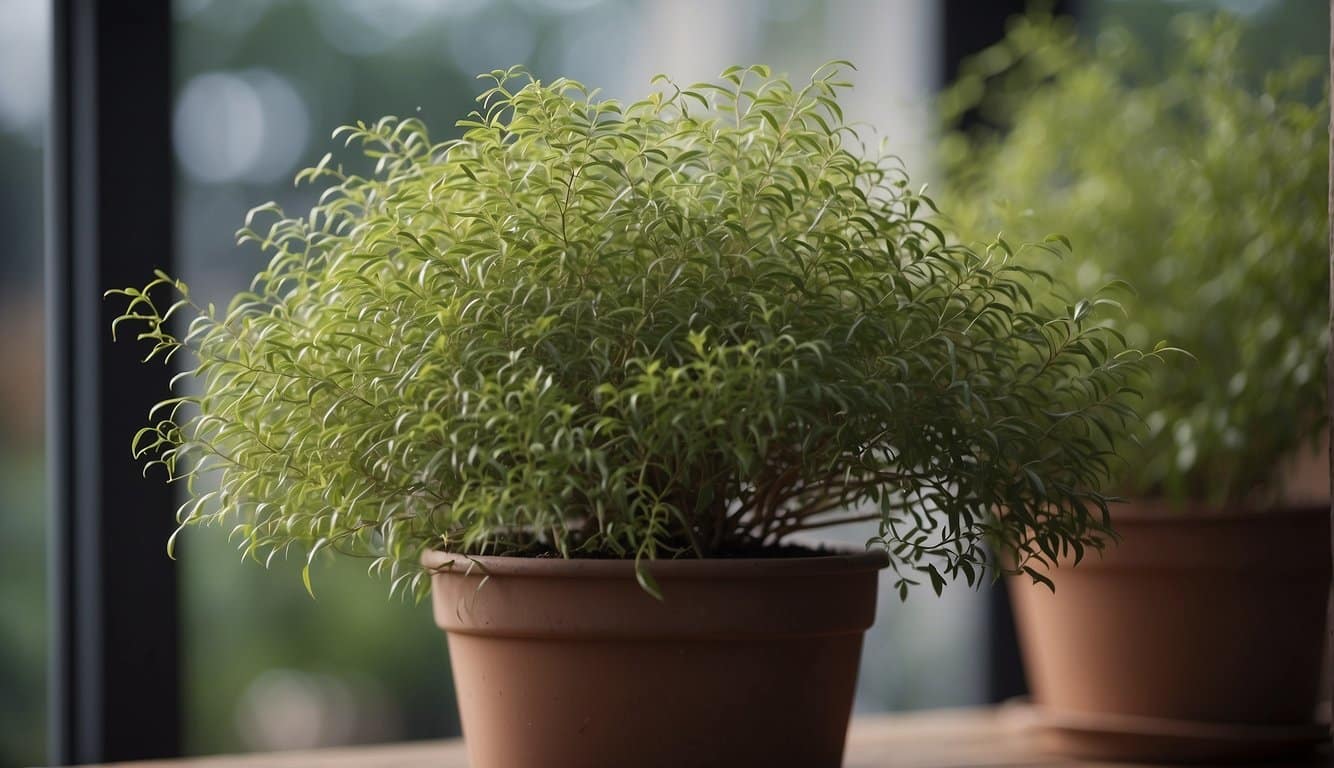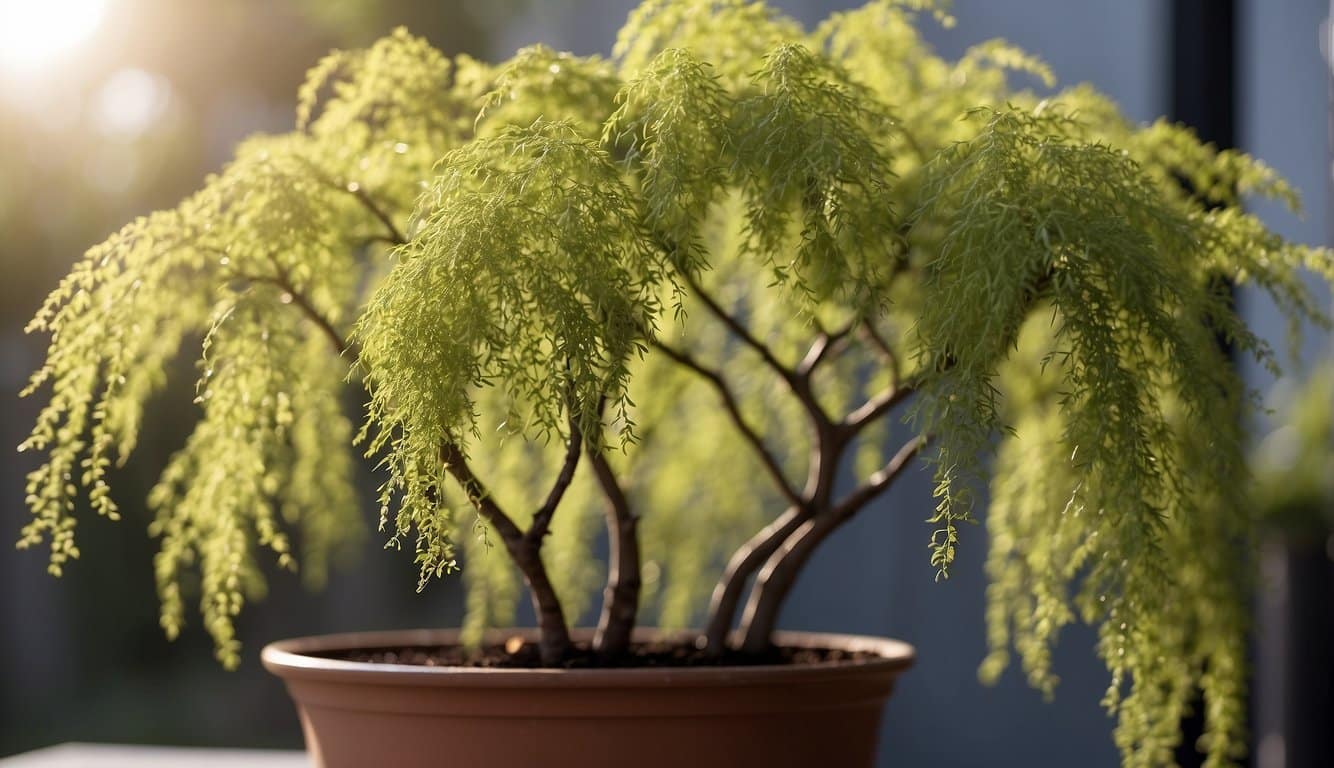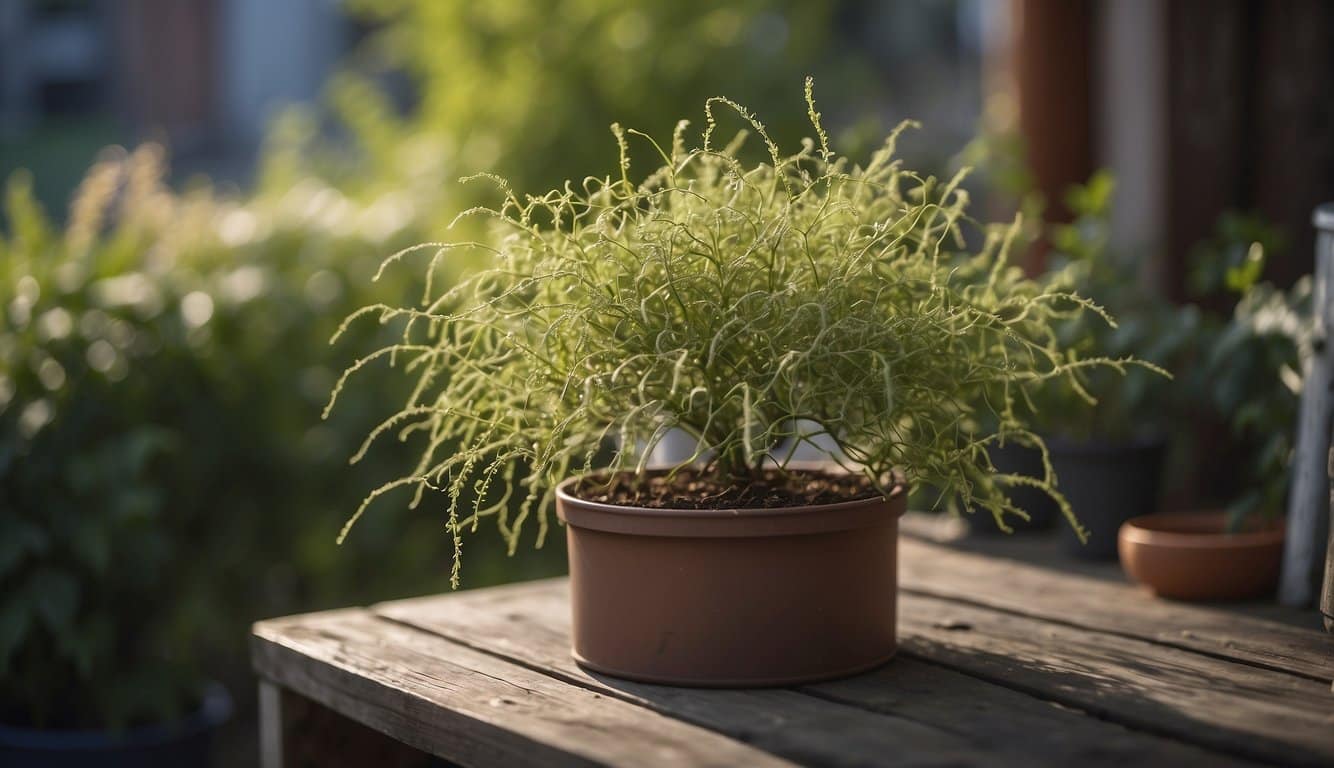Curly willows are a striking addition to any garden space, revered for their twisted branches and unique visual charm. Often found growing alongside bodies of water in the wild, they adapt remarkably well to container living, making them a popular choice for those who lack the space for a full-sized tree or wish to highlight their features at eye level.
When considering growing a curly willow in a container, the right preparation and ongoing care can make all the difference in the health and appearance of the tree.
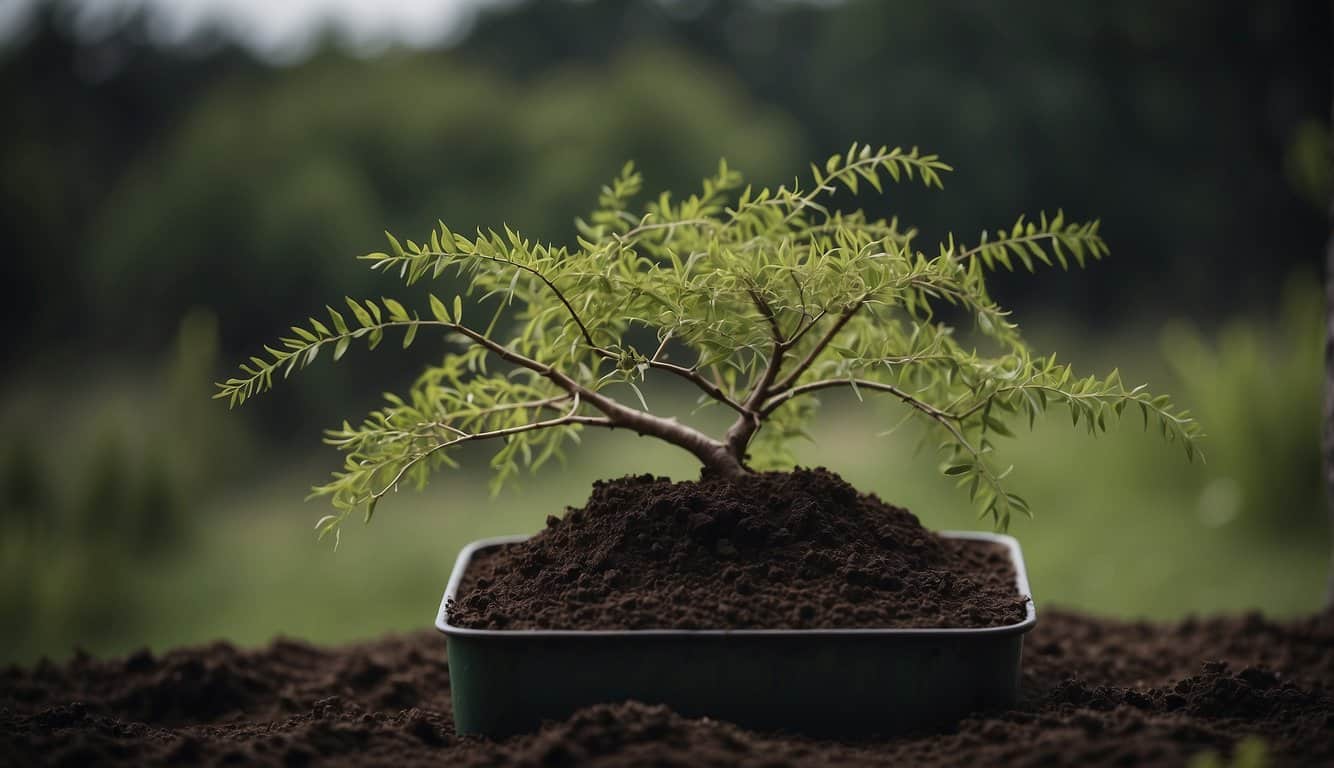
The process begins with selecting the proper container, which should be spacious enough to accommodate the root system while providing adequate drainage.
The choice of potting medium is equally crucial, as it should offer the right balance of moisture retention and aeration to support the tree’s growth.
Fertilization plays a key role in the nourishment of a curly willow, with controlled-release formulas being a practical option for maintaining consistent nutrient levels.
Furthermore, general plant care—from watering schedules to pruning practices—will ensure the willow thrives in its container environment, while vigilant pest and disease management will protect the plant’s overall health.
Key Takeaways
- Curly willow thrives in well-prepared containers with adequate space and drainage.
- Proper potting mix and regular fertilization contribute to the plant’s health.
- Consistent care and pest management are essential for a robust curly willow.
Choosing the Right Container
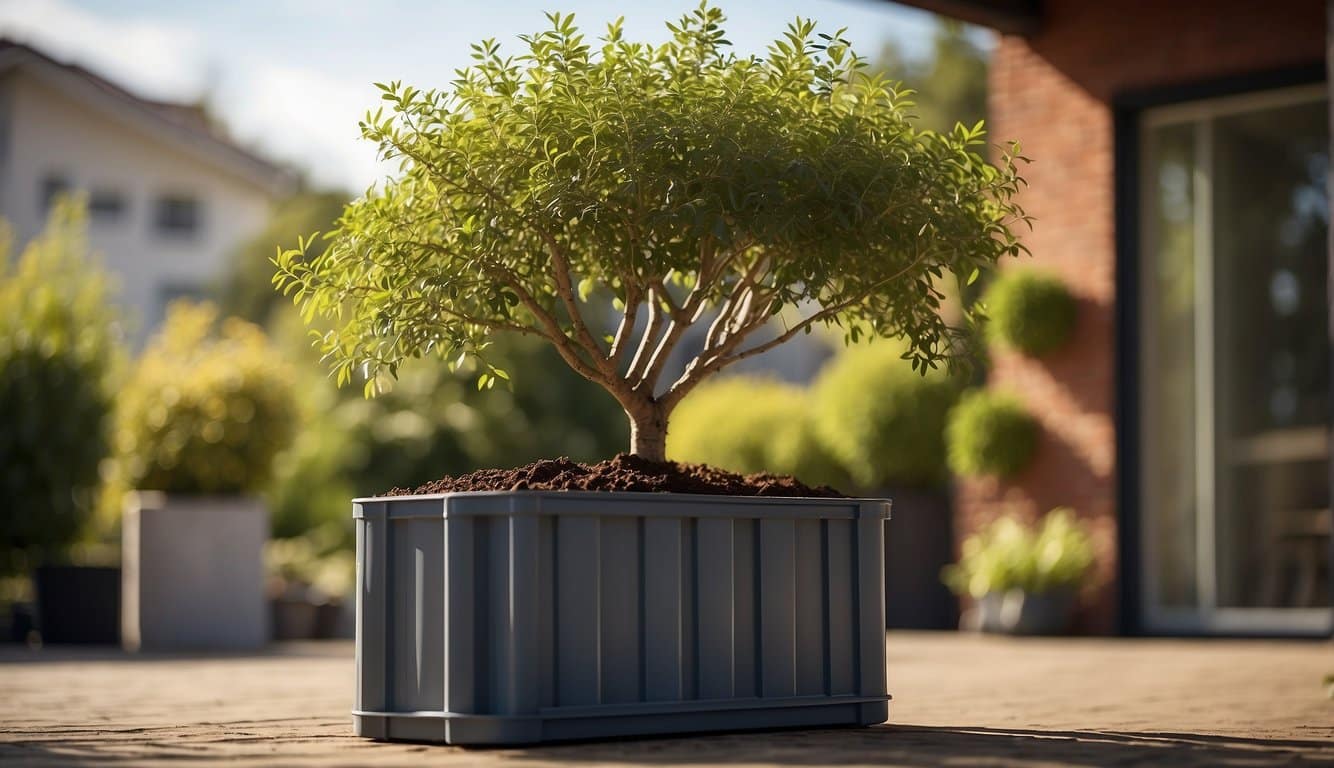
When growing a curly willow in a container, the selection of an appropriate pot is critical for the health and growth of the tree. The size and material of the container can determine the success of the planting.
Size Considerations
- Minimum Size: A large-sized pot with a substantial depth and width is necessary, as curly willows have a tendency to grow quickly and can become quite large.
- Minimum Size: A container with a minimum diameter of 18 inches and an equally proportionate depth is recommended to start with.
- Growth Potential: As the tree matures, it might require repotting into a larger container to accommodate its growth. Gardeners should anticipate this need and choose pots that can house the willow as it grows.
Material and Drainage
- Material: Containers made from wood or thick plastic are preferable. They provide enough support and insulation against temperature changes.
- Material: Ceramic and terracotta, while aesthetically pleasing, may require extra considerations for insulation during cold months.
- Drainage: Adequate drainage is critical to prevent waterlogging, which can lead to root rot.
- Drainage: Ensure the selected pot has multiple drainage holes at the bottom.
- Drainage: If necessary, improve drainage by adding a layer of gravel or broken pottery to the bottom of the pot before adding soil.
Potting Medium and Fertilization
Proper potting medium and fertilization are crucial for the healthy growth of a curly willow in a container. They ensure that the plant has the necessary support and nutrients to thrive.
Soil Requirements
Curly willow requires a well-draining potting mix to prevent waterlogging and root rot.
Gardeners should combine equal parts of peat moss, perlite, and compost to create an optimal environment.
Peat moss is critical for moisture retention, while perlite enhances soil aeration, preventing soil compaction. Compost introduces essential organic matter and nutrients that benefit the willow’s growth.
Fertilizer and Nutrients
Curly willows have a considerable appetite for nutrients, especially when grown in containers.
They benefit from a balanced, slow-release fertilizer applied during the growing season. For maintaining robust health, the following schedule is recommended:
- Spring: Apply a balanced fertilizer such as 10-10-10 to kickstart growth.
- Summer: Continue with the slow-release fertilizer to sustain development.
- Fall: Reduce fertilization as the plant enters dormancy.
Consistent monitoring of the plant’s response to fertilization helps in adjusting the amounts as needed, ensuring the curly willow receives proper nutrition throughout its growth stages.
Planting and Care
When growing a curly willow in a container, gardeners should prioritize proper propagation, consistent watering, and regular pruning to ensure the tree’s health and aesthetic appeal.
Propagation and Planting
Curly willow can be propagated from cuttings taken during the dormant season.
A stem cutting should be about 10 inches long, and the lower leaves removed before it is planted in a pot filled with a well-draining soil mixture.
It is essential that the container is large enough to accommodate the willow’s roots as they grow. Ensure that the diameter of the pot is at least 18 inches to start to give the willow ample room to establish itself.
Watering and Humidity
Curly willows thrive in moist environments, but they are susceptible to root rot if the soil is too waterlogged.
Gardeners should maintain consistent soil moisture with thorough watering sessions, allowing the top inch of soil to dry out slightly before watering again.
They prefer a high humidity level, which can be managed by placing the container in a location where it won’t dry out too quickly, such as a shaded or partly shaded area during the hotter parts of the day.
Pruning and Maintenance
Regular pruning maintains the willow’s shape and encourages healthy growth while preventing the tree from becoming too large for its container.
This can be done in late winter when the tree is still dormant.
One should remove any dead or damaged branches, as well as any branches that cross each other to improve air circulation.
Annual top-dressing with fresh soil and a slow-release fertilizer supports a nutrient-rich environment for the tree to thrive.
Pest and Disease Management
When cultivating curly willow in a container, gardeners should remain vigilant for signs of pests and diseases. This species is prone to a few specific problems that, if left unchecked, can compromise plant health.
Common Pests:
- Aphids: These small, sap-sucking insects cluster on new growth, reducing plant vigor.
- Control: A strong water spray can dislodge aphids, or they can be treated with insecticidal soap.
- Scale insects: These pests attach themselves to stems and leaves, causing yellowing or wilting.
- Control: Remove by hand or use horticultural oil for severe infestations.
Diseases:
- Powdery Mildew: A white or gray powdery fungus typically affects leaves and stems in humid conditions.
- Control: Ensure good air circulation and consider a fungicide appropriate for mildew control.
- Root Rot: Overwatering can lead to fungal diseases in the soil, causing the roots to decay.
- Prevention: Use well-draining potting mix and water only when the top inch of soil is dry.
Preventative Measures:
- Inspect Regularly: Catching problems early is key to management.
- Isolation: When introducing new plants to your collection, keep them isolated to prevent the spread of potential pests or diseases.
- Sanitation: Keep the area free of plant debris to limit the habitat for pests and diseases.
Frequently Asked Questions
Curly willow trees are an attractive choice for container gardening, offering twisted branches and interesting textures. Growing them successfully involves knowledge about best practices, winter care, propagation, container sizing, maintenance, and understanding their sunlight and shade needs.
What are the best practices for growing curly willow in a container indoors?
Indoor cultivation of curly willow requires plenty of light, so placing them near a south-facing window is beneficial.
Regular watering to maintain moist soil without overwatering is key, as is ensuring the pot has adequate drainage to prevent root rot.
How can you successfully grow curly willow in a container during the winter months?
During winter, curly willows in containers should be protected from extreme cold.
They should be kept in an area that is sheltered, such as a garage or shed, ensuring that the temperature does not drop below freezing.
Watering should be reduced, as the tree’s growth and water needs are lower in the dormant season.
What steps should be followed when propagating curly willow from a cutting?
Propagating curly willow involves cutting a healthy stem from the parent plant during early spring, stripping the lower leaves, and placing it in water or directly into moist soil to encourage root growth.
Consistent moisture and warmth help the cutting take root.
What is the ideal container size for growing a curly willow tree in a pot?
The initial container for a curly willow tree should be large enough to accommodate the root ball with extra space for growth, typically 18-24 inches in diameter.
As the tree grows, it may need to be repotted into a larger container to prevent root crowding.
How can you maintain a curly willow’s size when grown in a container?
To maintain the size of a curly willow in a container, annual pruning is necessary.
Pruning should be done in late winter or early spring to remove dead or overgrown branches and to promote a desirable shape.
What preferred conditions do curly willows need in terms of sunlight and shade when grown in containers?
Curly willows thrive in full sunlight but can tolerate partial shade.
When grown in containers, they should receive at least 6 hours of direct sunlight daily to ensure vigorous growth and the development of their characteristic curly branches.
